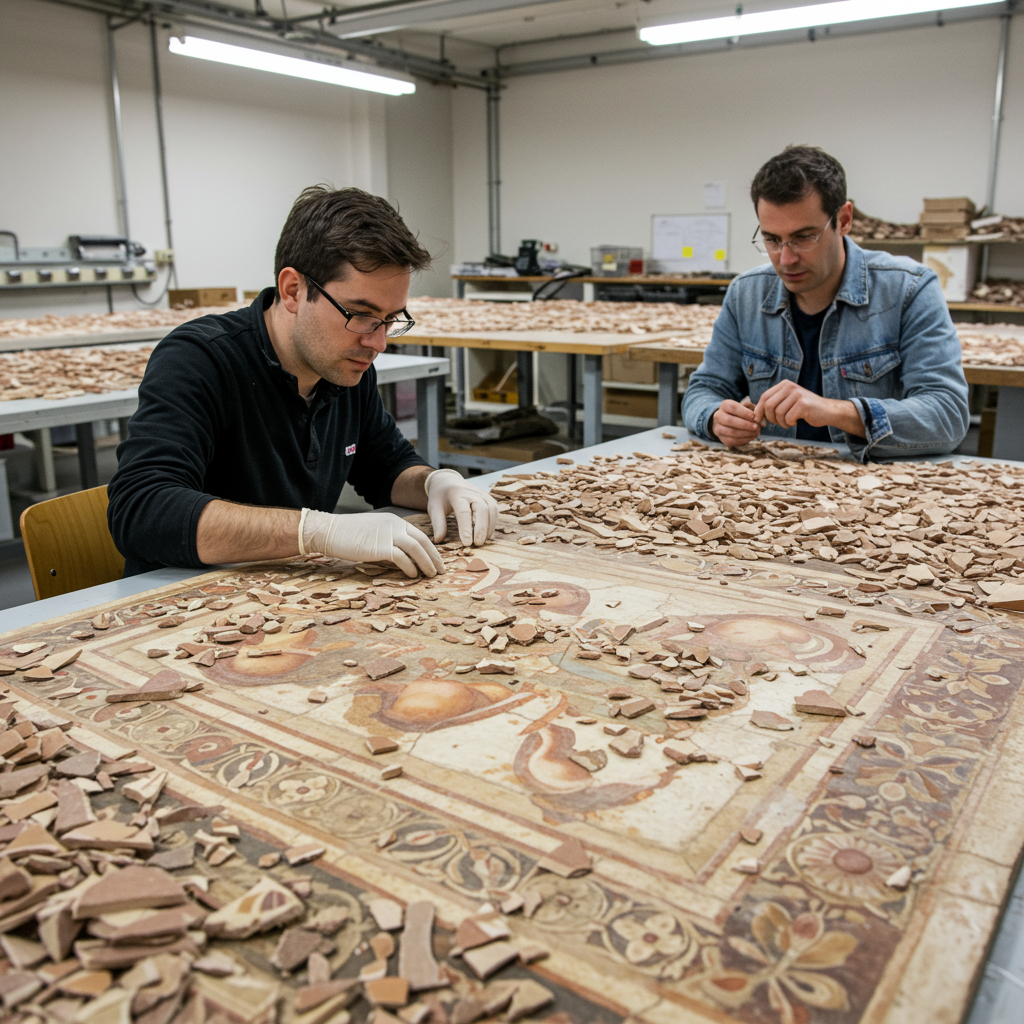Archaeologists in London have successfully pieced together thousands of shattered fragments of 2,000-year-old wall plaster, revealing remarkable frescoes that once adorned a luxurious Roman villa. Described as “the world’s most difficult jigsaw puzzle,” the painstaking reconstruction has unveiled stunning details of ancient Roman art, offering unprecedented insights into the wealth and culture of early Londinium.
A Colossal Roman Jigsaw
Discovered in 2021 during redevelopment work at a site in Southwark, just south of the River Thames, the fragmented plaster lay jumbled in a pit, likely discarded during the demolition of the building before AD 200. The process of meticulously sorting and reassembling these delicate pieces has taken several years, resulting in one of the largest, if not the largest, collections of Roman wall plaster and paintings ever found in Roman London. The fragments originate from at least 20 internal walls of the building, which dates back to the first or second century AD.
Revealing Rich Designs and Rare Details
The reconstructed frescoes showcase vibrant and detailed artistry. They feature designs predominantly characterized by bright yellow panels separated by black intervals – a style noted as unusually rare in Roman Britain, found at only a few other sites. These panels are richly decorated with depictions of musical instruments like lyres, various birds including elegant white cranes, flowers, and fruit.
One particularly fascinating detail is what might appear to be a bunch of grapes, which archaeobotanists have identified as mistletoe. According to experts, this suggests Roman painters were adapting classical ideas with local, North West European influences, adding a unique “local twist” to their work.
The largest reconstructed fresco measures an impressive 5 meters by 3 meters. Its design includes a lower section imitating pale pink marble with paint speckles, topped by the striking rich yellow panels framed by soft green borders. Decorative elements like candelabras, lyres, and a delicate daisy further highlight the sophisticated taste of the villa’s occupants.
Clues About Artists and Occupants
Beyond the beautiful artwork, the fragments have yielded intriguing clues about the people who created and inhabited this space.
A Painter’s Signature? One fragment bears the Latin word “Fecit,” meaning “has made this.” This inscription, potentially framed by a decorative “tabula ansata” carving used for signing art, is the first known example of a painter’s signature found in Roman Britain. Unfortunately, the piece where the artist’s name would have been is currently missing, leaving their identity a mystery for now. Archaeologists believe the frescoes were created by highly skilled, travelling painters working on large commissions during Roman London’s building boom.
Ancient Graffiti: The collection also includes unique examples of graffiti etched into the plaster. One piece features a nearly complete ancient Greek alphabet – the only known example of such an inscription found in Roman Britain to date. The precision suggests it was written by someone proficient in Greek. Another fragment reveals a moving portrait of a crying woman, depicted with a hairstyle characteristic of the Flavian period (AD 69-96).
“Beverly Hills” of Roman London
The high quality of the artwork and the grandeur of the building suggest it was either a wealthy family’s home or potentially a high-status hotel for affluent travellers visiting Londinium during its rapid growth phase. The location in Southwark, outside the traditional central hub of Roman London, has been dubbed the “Beverly Hills of Roman London” by the archaeological team.
This discovery in Southwark, alongside other finds at the site like a stunning mosaic and a Roman cemetery, challenges the idea of Roman London as merely a provincial outpost. It demonstrates that Romans were significantly investing in the city relatively early on, settling and establishing thriving, wealthy communities beyond the central core.
The meticulous work of piecing together these fragile fragments allows us to see artwork unseen for nearly two millennia, offering invaluable insights into Roman artistry, wealth, literacy, and the expanding footprint of one of Roman Britain’s most important cities. Research into the vast collection of fragments continues, promising further revelations about this fascinating period of history.



